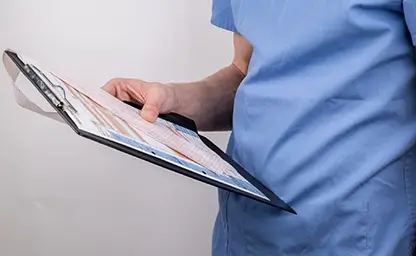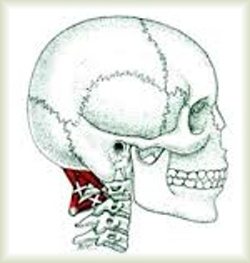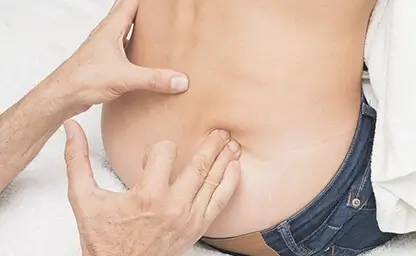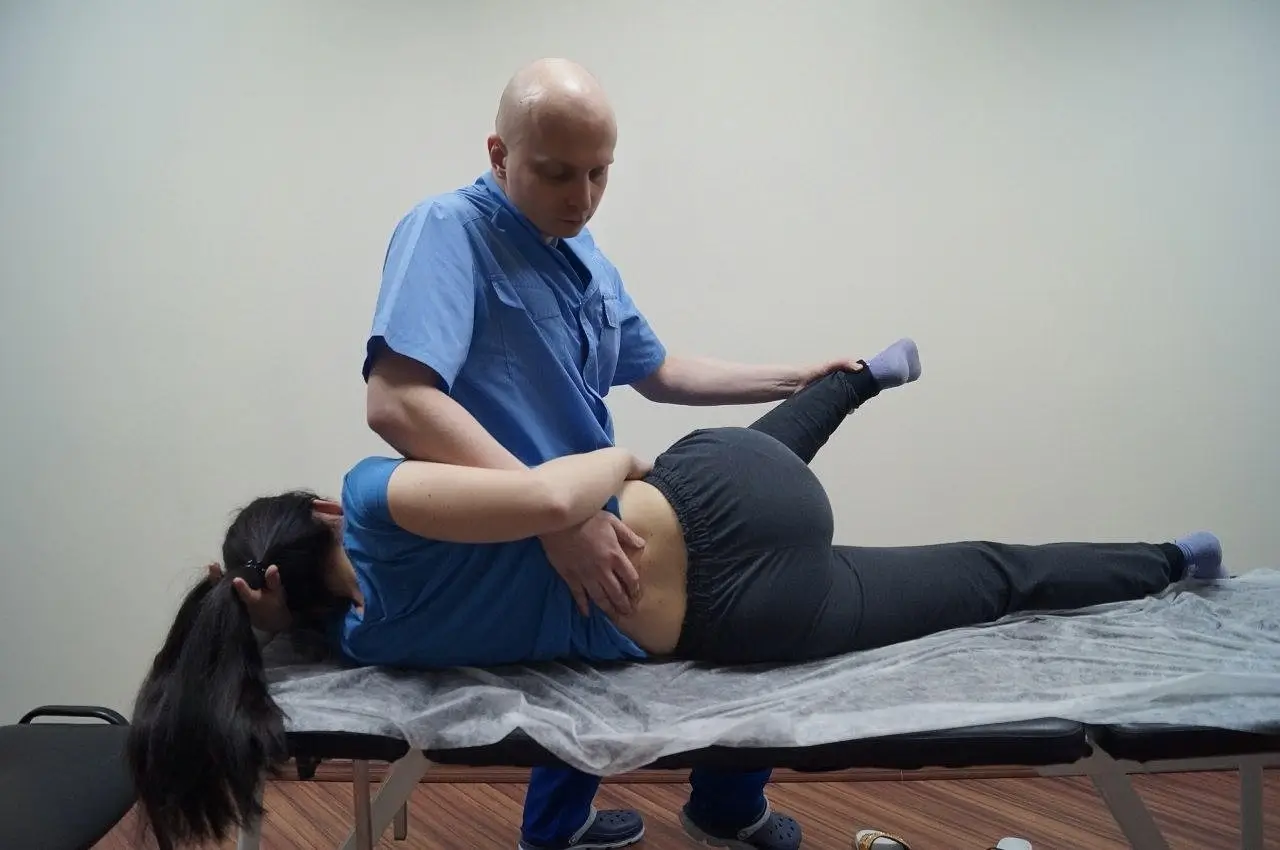

Constant pain at base of skull
53 year old woman.Complains of constant pain at base of skull in the back of the head, discomfort in the upper cervical spine. This condition lasts about a year.
 Objective examination: suboccipital area is tense, deep suboccipital muscles are sharply painful on palpation at the base of skull, especially on the left side, limitation of mobility between the occipital bone and the first vertebra (atlantooccipital joint on the left), vertebral artery test negative, tests of ligament integrity (alar, transvers ligaments) are negative, pressure on the spinous process of the second vertebra provokes habitual pain.
Objective examination: suboccipital area is tense, deep suboccipital muscles are sharply painful on palpation at the base of skull, especially on the left side, limitation of mobility between the occipital bone and the first vertebra (atlantooccipital joint on the left), vertebral artery test negative, tests of ligament integrity (alar, transvers ligaments) are negative, pressure on the spinous process of the second vertebra provokes habitual pain.
Diagnosis: functional articular block C0-C1 in flexion on the left, muscle-tonic syndrome of the suboccipital muscles, their myofascial dysfunction.
Treatment: appropriate muscle-energetic technique using oculomotor synergies for the atlanto-occipital joint, myofascial release of the suboccipital region, gentle, rhythmic mobilization of the mid- and lower cervical region, very gentle anterior mobilization of the first and second vertebrae followed by positional relaxation of the surrounding tissue.
As a result: significant relief after the first session, (decrease of pain, discomfort, "as if clear in the head"), disappearance of all subjective symptoms after the second session. Examination of the body showed freedom of movement in the upper cervical spine, no pressure on the spinous process of the second vertebra and marked improvement of muscular condition. The patient was examined again in five days: no functional disorders and no symptoms.
Constant pain in the back of the head. Conclusions.
Pretty simple disorder, which caused much discomfort, but didn't disappear during the whole year. The patient, when asked, attributed the pain to "osteochondrosis, blood vessels, pressure". Clearly, the appropriate treatment methods would have had no noticeable effect on the functional disorder. While searching for the root cause, the following points were found out: work is accountant (long sitting and static muscle tension), the monitor is below eye level (habit of bending and sticking the head forward), the monitor is not centered, but to the left (constant turning the head to the left). Recommendations were given to improve the ergonomics of the workplace and to prevent repetitive muscles tension and the pain in the back of the head.

Grigori Tafi
Osteopath, sports medicine doctor
15 years of experience in osteopathy and manual therapy. Read more...
☛ Сhest pain after laughing.
☛ Feeling dizzy when turning head.




